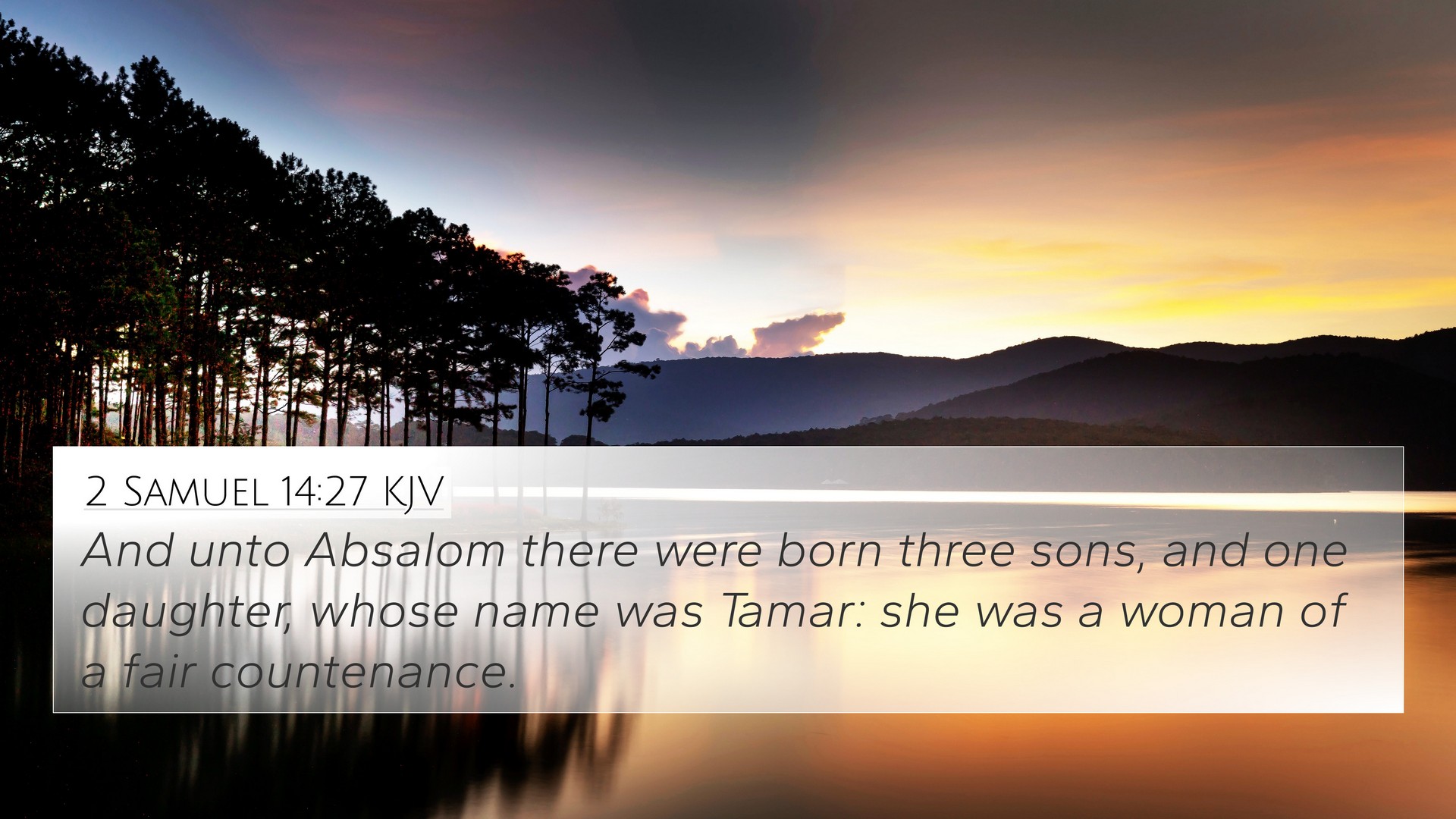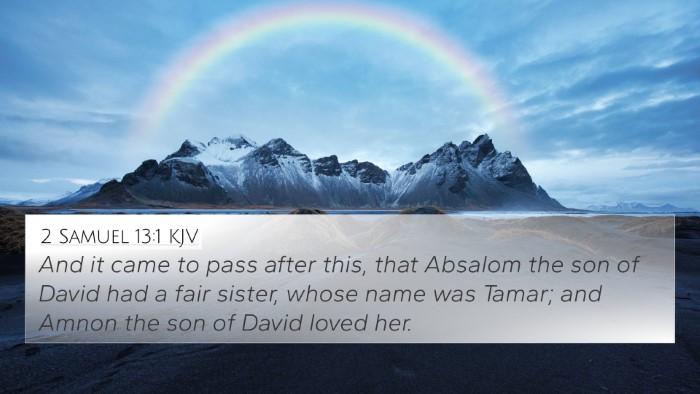Understanding 2 Samuel 14:27
Verse: 2 Samuel 14:27 - "And unto Absalom there were born three sons, and one daughter, whose name was Tamar: she was a woman of a fair countenance."
This verse presents a brief account of Absalom's family, emphasizing the birth of three sons and a daughter named Tamar, who is noted for her beauty. To better understand this verse, we can delve into insights from various public domain commentaries.
Commentary Insights
-
Matthew Henry's Commentary:
Henry emphasizes the significance of names in the Hebrew tradition. He notes that Tamar's name recalls her aunt, the victim of Absalom’s brother Amnon’s grievous sin. This connection might symbolize a legacy of beauty coupled with the darker themes of familial conflict.
-
Albert Barnes' Notes:
Barnes highlights that this verse might reflect Absalom’s ambition and desire for legacy, suggesting that his sons would play crucial roles in future narratives. The mention of Tamar, noted for her beauty, signifies the continuation of lineage and is also a foreshadowing of the complexities within Absalom’s family dynamics.
-
Adam Clarke's Commentary:
Clarke adds context regarding the family life of Absalom, noting that the mention of his children contributes to the overall understanding of his character and actions. Moreover, he views Absalom's emphasis on family as an attempt to consolidate power and influence in Israel.
Bible Cross-References
- 2 Samuel 13:1-2: This reference discusses Amnon and Tamar, linking Absalom to the preceding narratives of sin and tragedy.
- 2 Samuel 15:1-6: These verses illustrate Absalom's political maneuvers, giving insight into his ambitions following the establishment of his family.
- 2 Samuel 18:18: Here, Absalom’s fate is further examined, emphasizing the consequences of his actions and family ties.
- Genesis 38:11: Comparisons can be drawn to other notable figures in Biblical texts dealing with familial relationships and legacies.
- 1 Chronicles 3:1-4: This genealogy checks the lineage of David’s sons, showcasing the broader implications of Absalom's descendants in Israel’s history.
- Psalms 55:12-14: David's lamenting touches on familial disputes, connecting emotionally to the narrative surrounding Absalom.
- Proverbs 5:18-20: The warnings found here regarding familial fidelity resonate deeply with the sins committed in Absalom’s family.
- Exodus 34:7: Themes of visiting the iniquity of the fathers upon the children echo throughout Absalom’s familial circumstances.
- Matthew 1:12: The genealogy of Jesus includes David and the notable lineage, bringing a redemptive framework to familial failures.
- Luke 23:31: Here, Jesus refers to family and societal dynamics, inviting reflections on the consequences of one's lineage in broader contexts.
Thematic Bible Verse Connections
The themes of legacy, beauty, familial conflict, and ambition are critical for understanding this verse's implications in both its immediate context and the larger Biblical narrative. Absalom’s children symbolize hope and power, but may also foreshadow future conflicts that arise from familial strife, as seen through the broader lens of Scripture.
Bible Cross-Reference Tools
For those seeking to delve deeper into thematic cross-referencing, tools such as a Bible concordance or a bible cross-reference guide can be invaluable. These resources allow users to explore connections, trace narratives, and understand the intricate dialogues between verses across both the Old and New Testaments.
How to Navigate Bible Cross-References
Understanding how to use Bible cross-references effectively can enhance your study:
- Identify key themes and characters within the verse.
- Use a cross-reference Bible study method to find related passages.
- Explore a bible reference resource for comprehensive materials.
- Investigate patterns between the Old and New Testament, focusing on typological connections.
- Reflect on the implications of familial narratives throughout Scripture.
Conclusion
2 Samuel 14:27 is rich with meaning, prompting readers to reflect on the complexities of personal and familial relationships. By linking this verse to others, we gain a deeper understanding of God's overarching narrative concerning family, legacy, and the consequences of human action.







